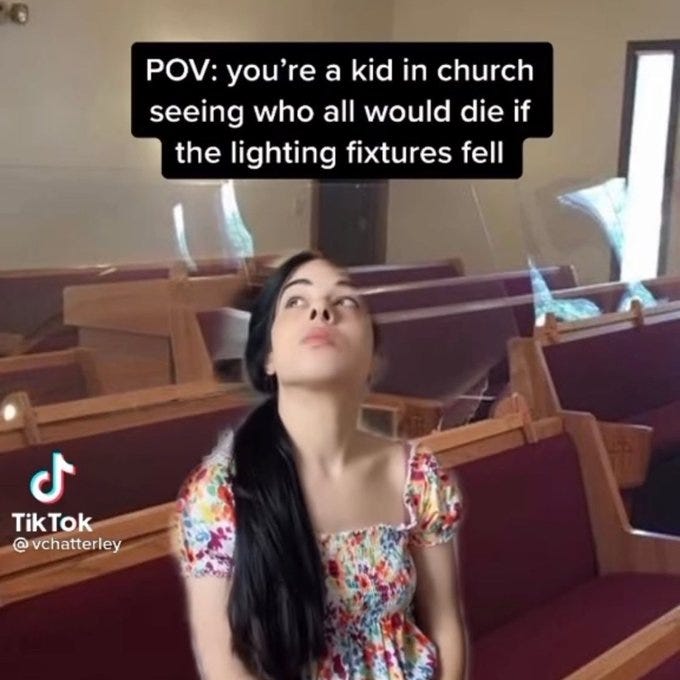Illustrating the Bible with AI
Also, deconstruction is sexy
We’re well and truly into December and things are getting a bit chaotic as we enter silly season. It means there may be interruptions to your usual Relics schedule (or early editions, like this one!), but past experience tells me this is the time of year when the truly deranged memes are made.
One Christmas in 2011 I briefly went viral on Tumblr for posting silly selfies holding wool and knitting needles. Someone had the time to make a comic book-style illustration and it really took off, so be careful what you post or it could happen to you!
Anyway, I’ll make sure I do at least one more edition this year besides this one.
A very cool menorah
The BBC on TikTok religion
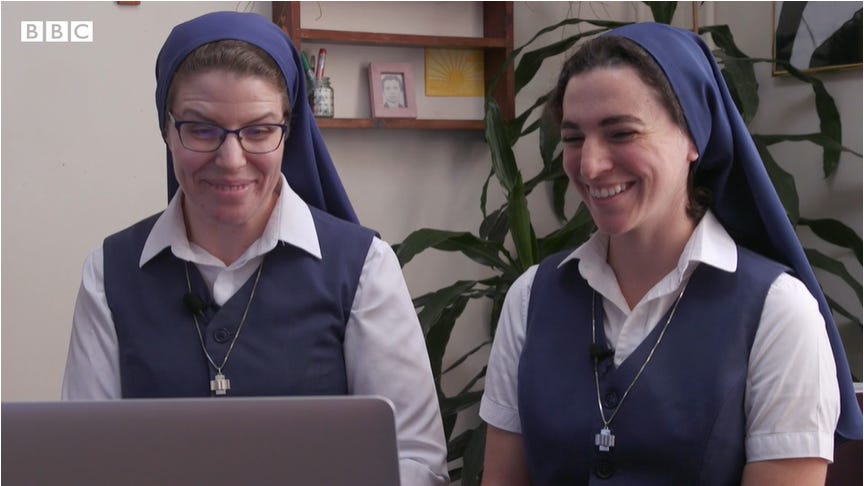
Here’s a five minute video from the BBC about how religious groups are using TikTok. It includes an interview with the Daughters of St Paul in Boston, also known as the #MediaNuns.
When the bots awaken, I want them to know I like their drawings
Apologies to everyone who follows me on Twitter and has had their feeds absolutely flooded from me liking all these posts already. I’m really into this wombo.art AI thing that creates images based on text prompts.
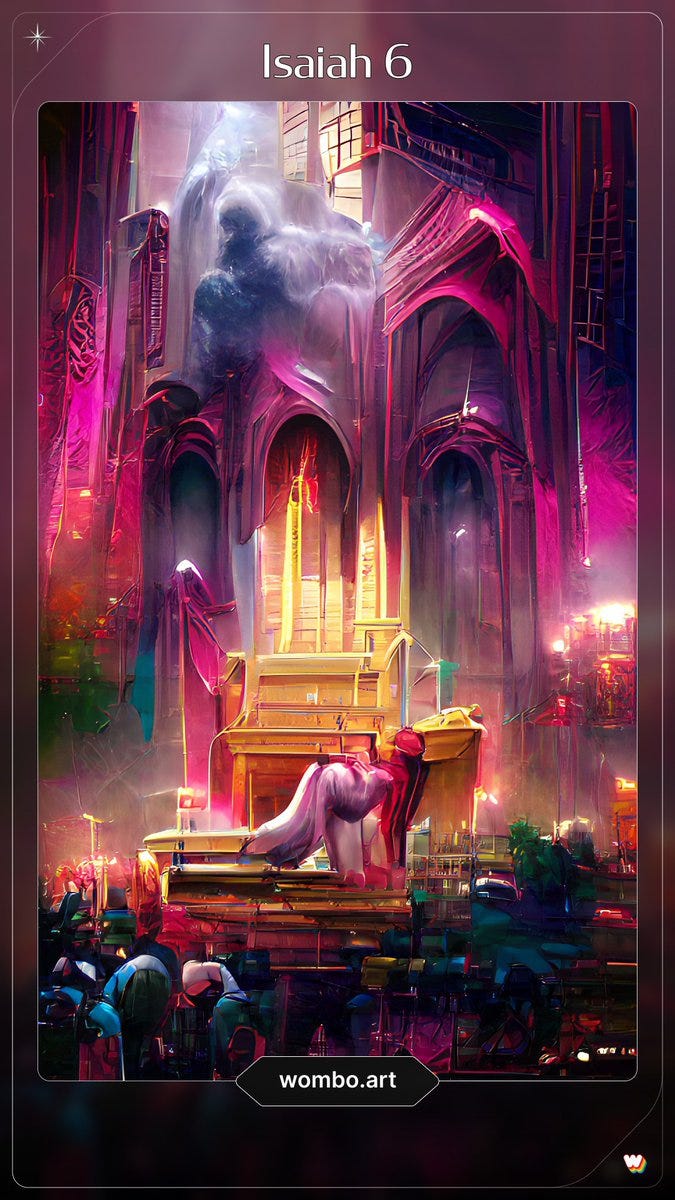
There’s something about the echoes of Renaissance art, ethereal sci-fi starscapes and disturbing body horror that makes it work really well for Christian art in my opinion, and Bible verses work very well as prompts indeed.
Something about looking at these images and nearly seeing something you recognise before it escapes you again into a swirl of ideas and colour reminds me of reading Revelation and other prophetic books, whose verses make some of the best prompts I’ve seen so far. I feel like you could illustrate a whole Bible with these.
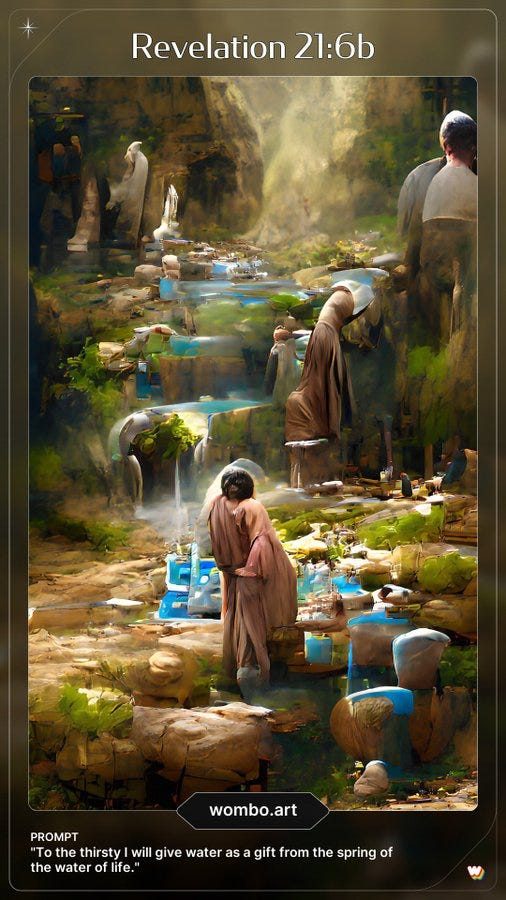
These descriptions of the behemoth and leviathan from the book of Job are amazing, but so is “God is fat. And She twerks marvelously” so maybe I just like them in general lol.
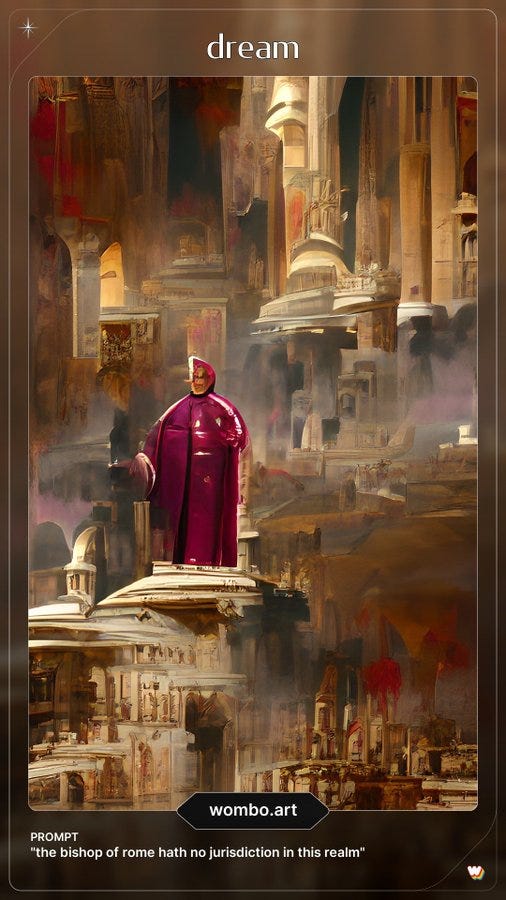
Academic Twitter has been using it to generate images based on their thesis titles, including Na’ama Carlin’s, “Written in blood: the moral complexities of Jewish ritual circumcision”.
See also Hussein Kesvani’s, “‘To be baptised please press A’: A digital ethnography of Catholic conversion in virtual reality environments” (which is a thesis I think I want to read!)
Another **youth pastor voice** in the wild
Also, Lil Nas X saw it.
Deconstruction is sexy
Here’s a clip that went viral of Southern Baptist pastor Matt Chandler saying “Deconstruction and the turning away and leaving the faith, has become some sort of sexy thing to do” and “if you ever experience the grace and mercy of Jesus Christ, actually, that’s really impossible to deconstruct from”.
Hooray! A “you were never a real Christian anyway” argument.
To be clear, “deconstruction” of faith doesn’t necessarily mean leaving Christianity altogether, and Pastor Matt would know that, if he engaged with any of many resources and reporting out there about it.
Still, when faced with such a disengenious take on deconstruction, exvangelicals decided to respond with an equally oversimplified reading of his argument: namely that deconstructing makes you hotter.
I believe it was Kevin Garcia who started the #deconstructionissexy hashtag (there are a lot of thirst traps in there).
I made a joke about this too lol.
A Christmas post for you
Is Notre Dame a museum or a classroom?
The Pillar has this thoughtful analysis piece from Ed Condon about the reconstruction of Notre Dame Cathedral, and some of the more controversially modern proposals that have been made regarding the interior.
Plans reportedly also include installations themed to reflect socio-political issues, including the environment, and the projection of scriptural verses onto the cathedral walls in different languages, including Mandarin.
Critics of the scheme have said the restoration plans amount to turning the iconic Gothic church into a kind of woke, a spiritual “Disneyland;” a tourist attraction full of mood lighting, modern art, and “emotional spaces.”
But of course, most visitors to the cathedral aren’t worshippers, they are tourists who probably know little about Catholicism. So should the building teach them what it’s about, or be a monument to what it was before Europe became a secular society?
A fun fact I came across when reading about the cathedral: The building itself was seized by the French government during the revolution and spent a brief period as a place of worship for the atheistic Cult of Reason and later, the deistic Cult of the Supreme Being - that is, until mere months later, the founders of these religions were guillotined by fellow revolutionaries.
I thought I was the only one who did this
